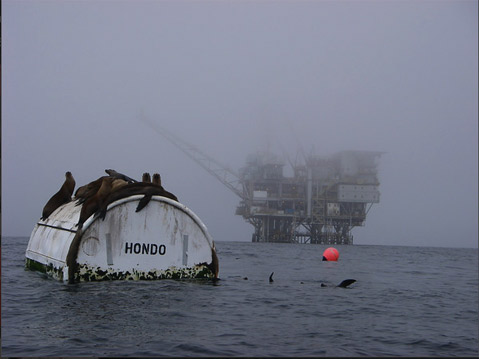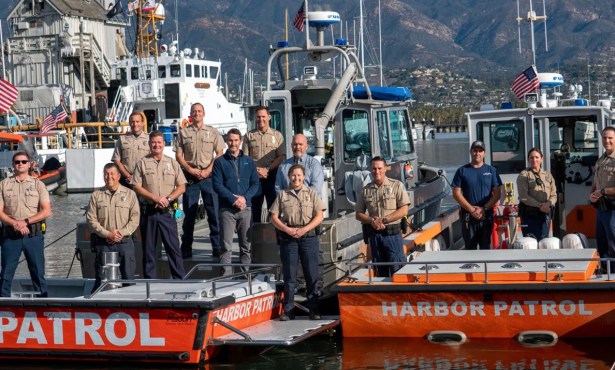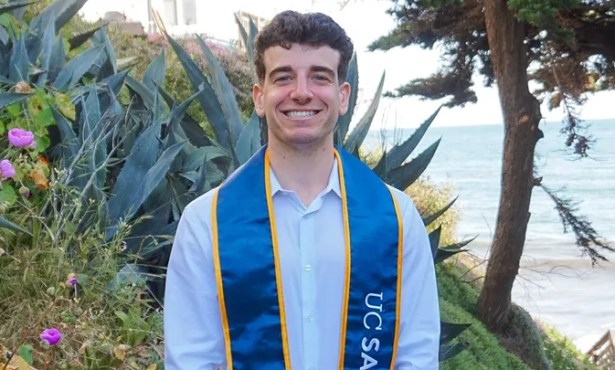EDC Wins Greater Regulatory Scrutiny for Offshore Fracking
Discovers 51 Permits Issued Without Notice or Environmental Scrutiny

The Environmental Defense Center (EDC) announced it reached a settlement with the two federal regulatory agencies charged with permitting offshore fracking and other forms of high-pressure well stimulation techniques to secure greater public disclosure and environmental analysis. The lawsuit was filed two years ago after the EDC discovered that the two federal agencies — the Bureau of Safety and Environmental Enforcement and the Bureau of Ocean Energy Management — had approved 51 permit applications to ExxonMobil and Venoco for offshore fracking or acidification in federal waters off the Santa Barbara coast in the past 18 months. In none of these cases was any public notice given that these actions were under consideration; in none was any environmental analysis required. In all 51 instances, the federal agencies granted the applications “categorical exemptions,” a check-the-box decision to require no analysis of potential environmental impacts.
According to terms of the settlement, public notice for any future offshore applications for fracking and acidification must be provided. In addition, the agencies have agreed to provide what’s termed “a programmatic” environmental assessment of the potential impacts of such techniques on the coastal environment. That assessment will examine in broad one-size-fits-all terms if the controversial extraction techniques pose a possible threat to the environment. If the determination is affirmative, then further environmental review will be required. If not, then the agencies will be allowed to issue categorical exemptions when issue permits.
In its lawsuit, EDC noted that fracking is a high-pressure drilling technique designed to extract otherwise hard-to-get reserves. But given the fragile, crumbly nature of the shale formation that makes up the geology of Santa Barbara’s ocean crust, EDC argued such technologies might pose significant risks. Likewise, EDC attorney Brian Segee argued that the use of such intensely toxic chemicals such as hydrofluoric acid in the acidification extraction techniques — some of which also rely on high-pressure blasting to loosen up recalcitrant oil deposits — are too potentially problematic to be granted categorical exemptions as a matter of course.
Segee said the permits came to EDC’s attention only when it made inquiries of the two federal agencies in a fact-finding fishing expedition. He said he was struck by the initial reluctance and resistance exhibited by the two agencies, which demanded that he file a Freedom of Information Act request before releasing any documentation. Ultimately, Segee would receive hundreds of pages of emails. The initial emails, he said, indicated that bureau officials themselves were in the dark about the permit applications and equally so when it came to environmental concerns.
Segee noted that the settlement had been initially opposed by ExxonMobil and the American Petroleum Institute, whose attorneys argued that the additional permitting requirements could hamper their access to a resource for which the oil companies had secured their lease rights. Likewise, they argued that federal environmental law was far from explicit about such situations. Segee stated that because the Santa Barbara Channel had been deemed off-limits to oil and gas leasing by congressional action for more than 30 years, there wasn’t a treasure trove of National Environmental Policy Act cases to offer guidance. Even so, he argued, federal environmental law requires that regulatory agencies demonstrate they have at least considered potential environmental implications of certain policies and practices before granting blanket exemptions. In the issuance of the 51 permits, no such deliberation took place.
Neither of the federal agencies sought to defend their practices in legal papers, petitioning instead to settle the dispute. While ExxonMobil and the American Petroleum Institute did not sign off on the agreement, Segee said, they have agreed not to oppose it. The agreement, however, will not be official until a federal judge rules it so. At that point, the $64 million question will become whether an admittedly scant body of scientific research shows such controversial drilling techniques pose a possible threat or not.



